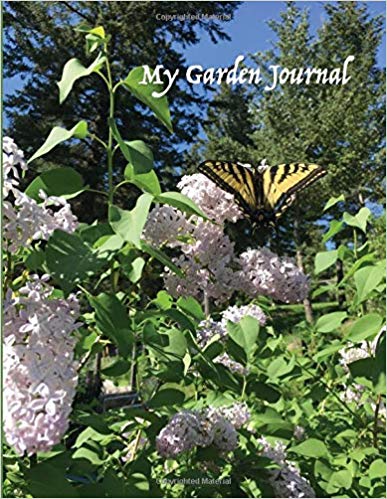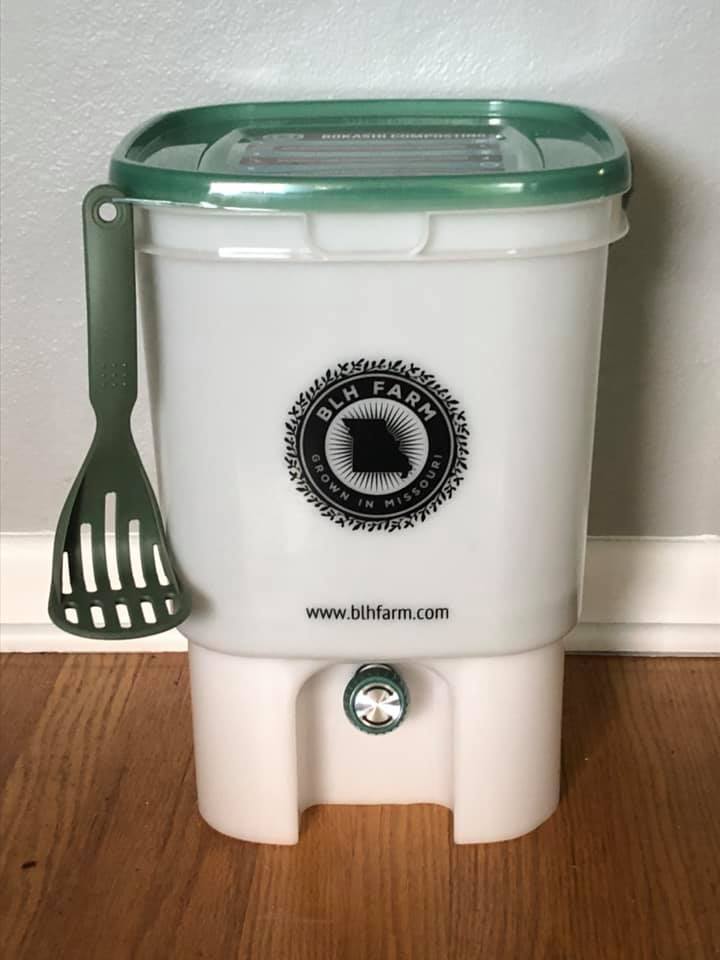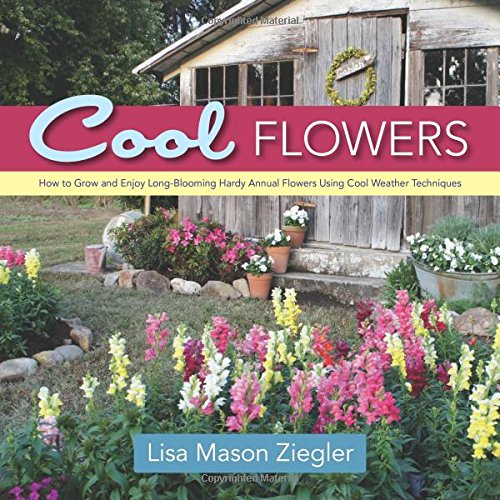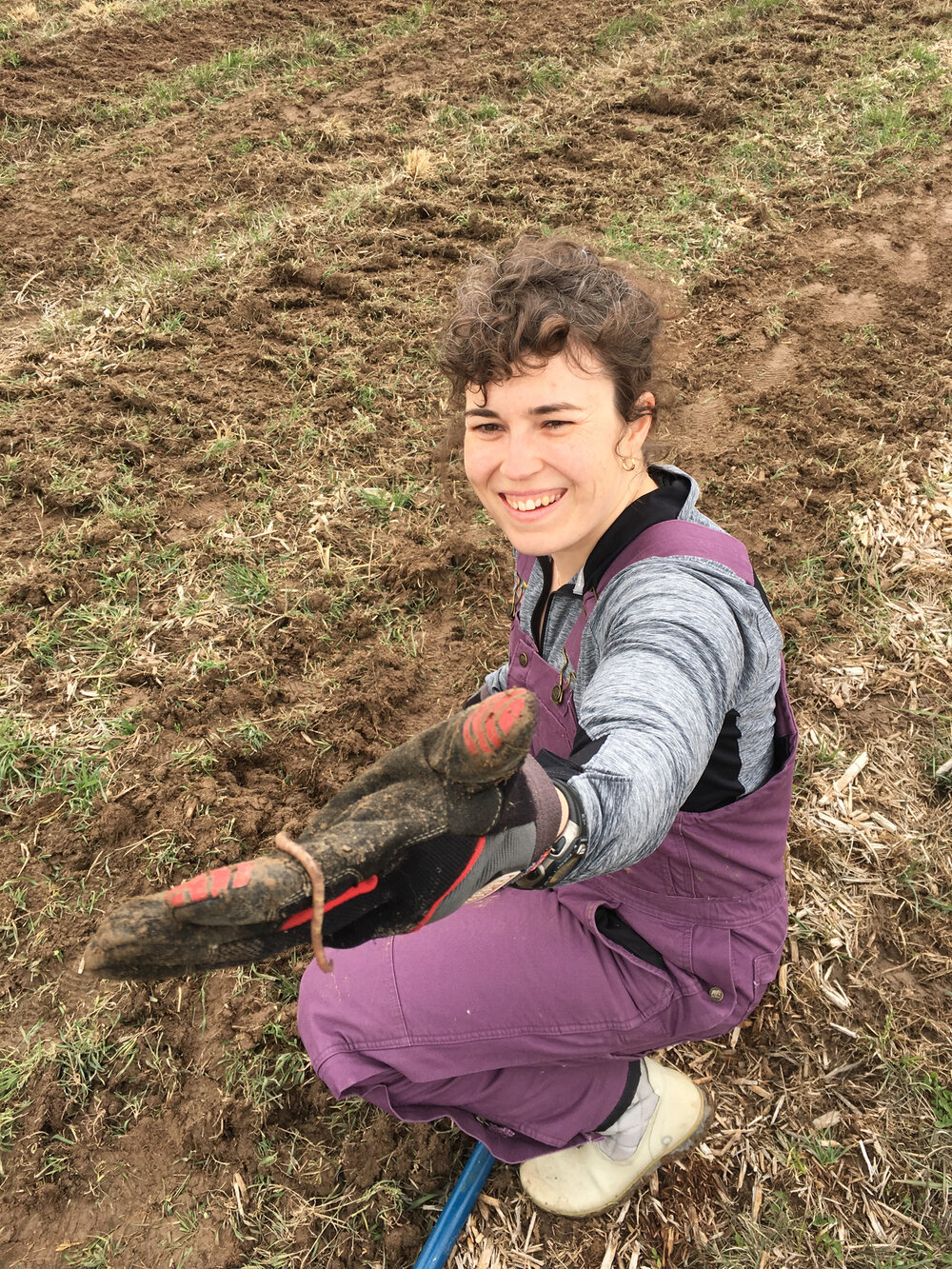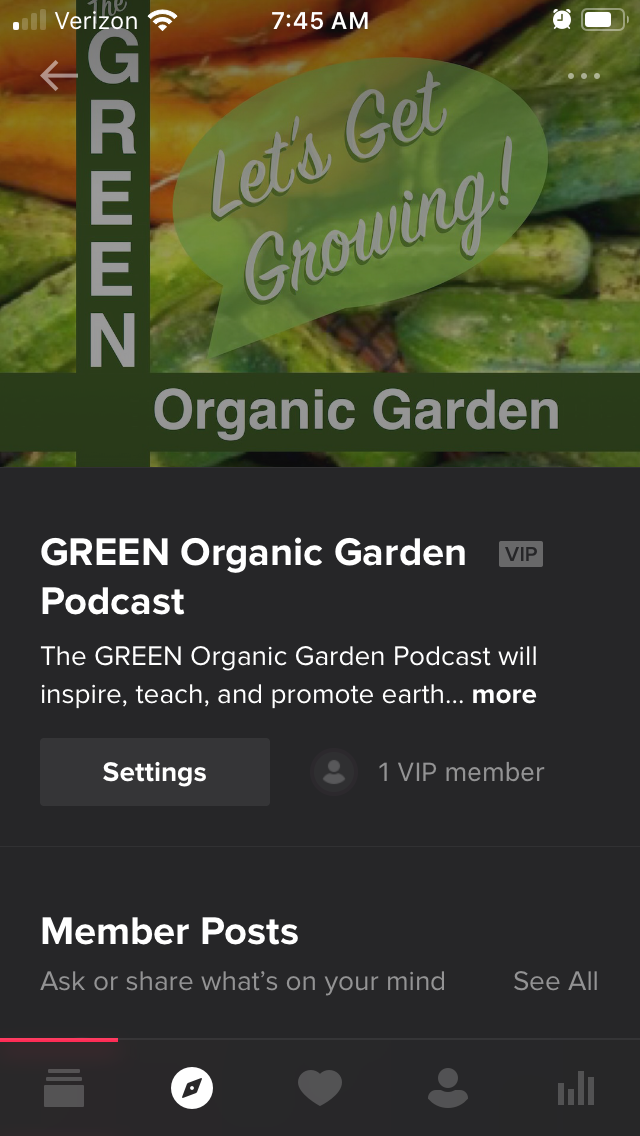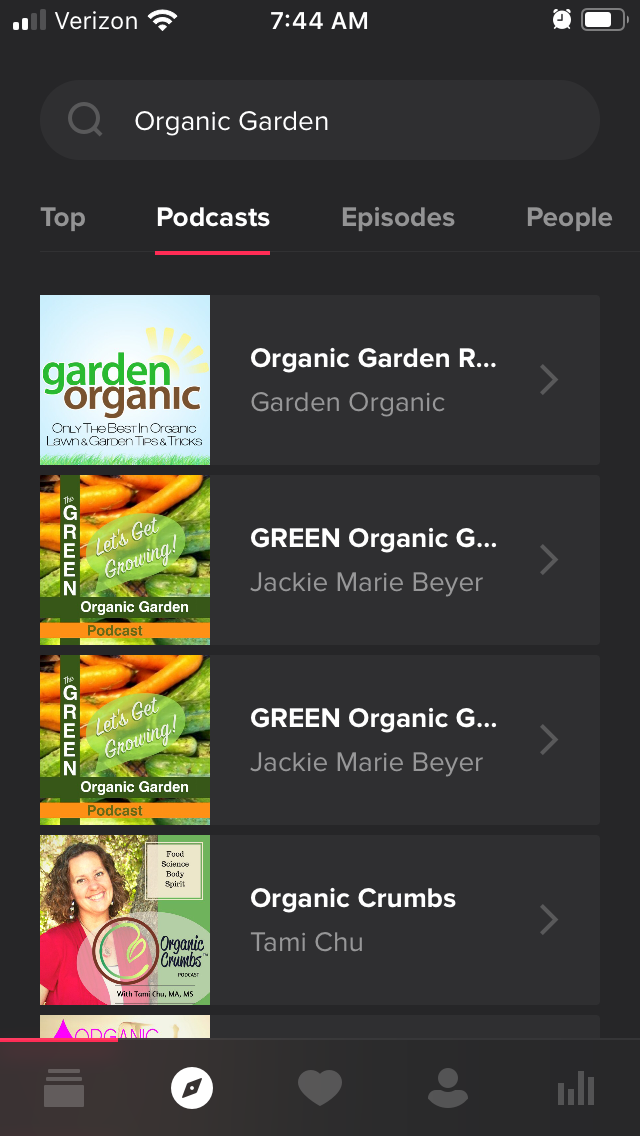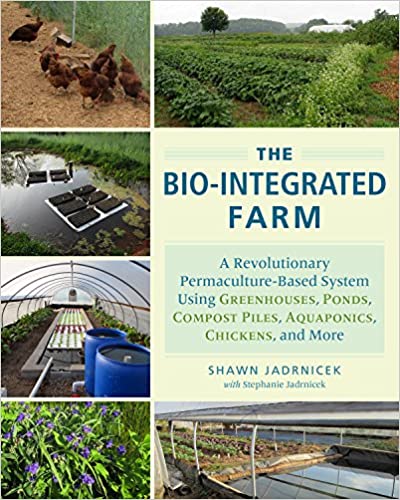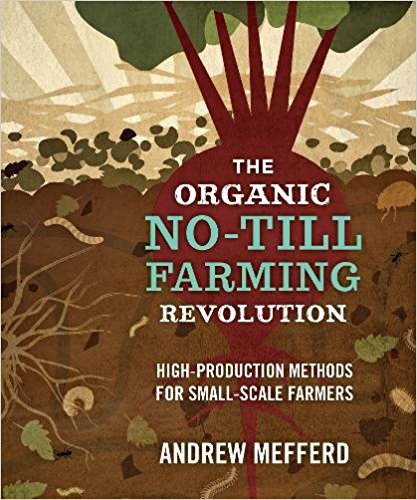332. Flower Farming • Bokashi Composting • Worms | Matt Arthur | BLH Farm | Missouri
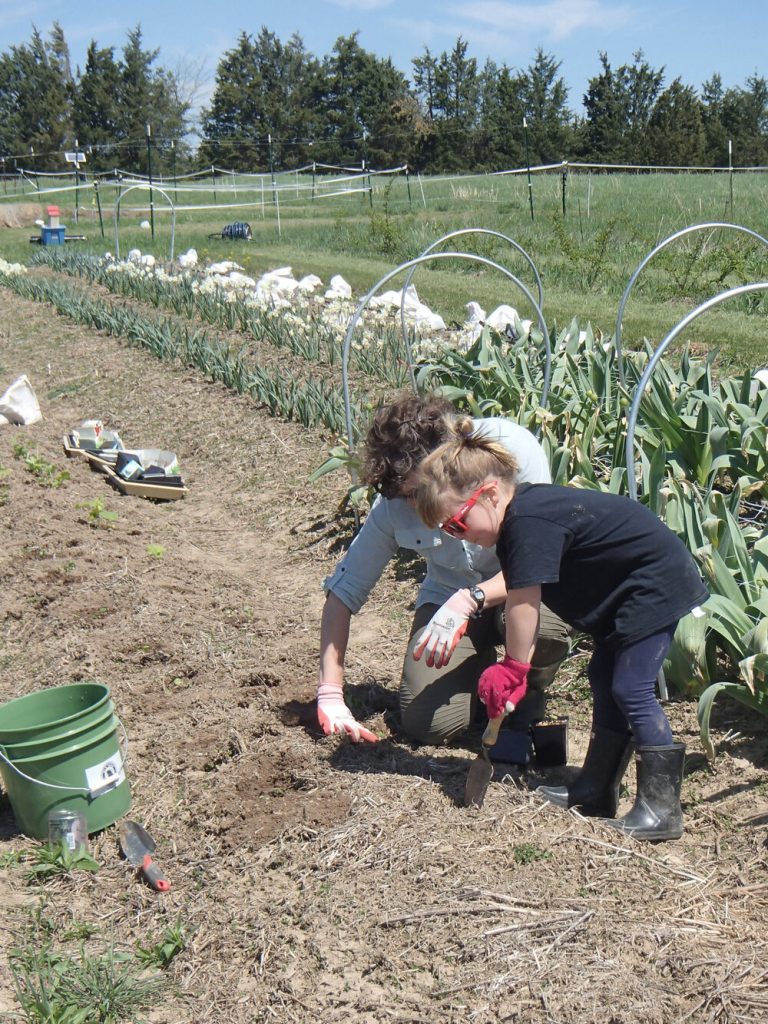
Welcome to the GREEN Organic Garden podcast. It is Saturday, July 18, 2020, and I have an amazing guest on the line. You have to check out their website is so beautiful and just full of lots of great stuff.
And here to share with us today from B L H Farm is Matt Arthur.
You can find BLH Farm on Facebook here.
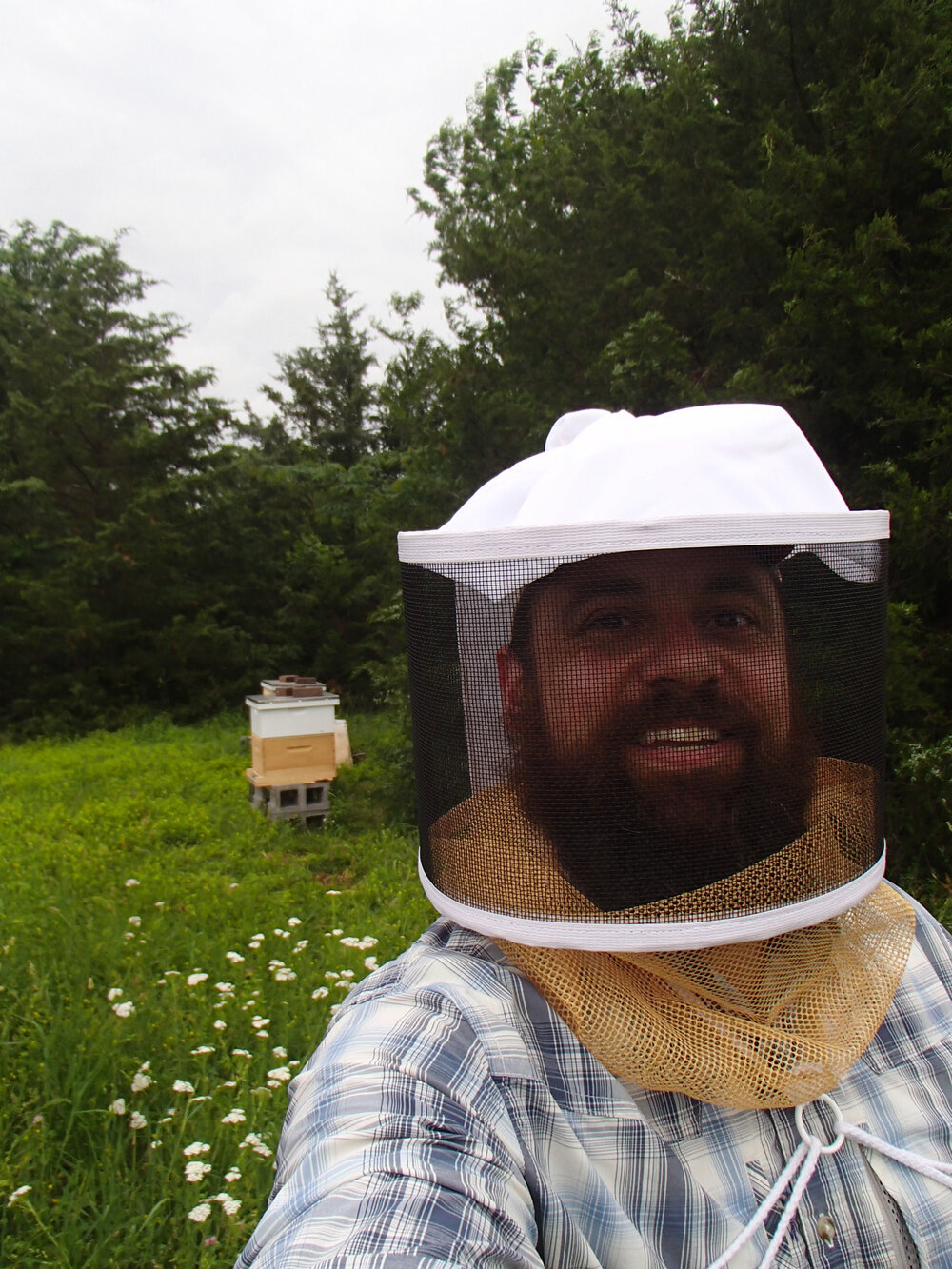
So welcome to the show, Matt.
Hi, Jackie.
And we’ll talk, I mean, I want to ask you about yourself, but I really want to know what B L H stands for.
1 (1m 41s):
Yeah, so it stands for Boone’s Lake Heritage Farm. I grew up in central, Missouri on a family farm. It still had the wagon ruts from Daniel Boone’s trail West from Missouri through to the Southwest. So I grew up playing on a Creek and in the field with those wagon trails so visable.
So we started our flower farm now on some of our land that wasn’t being used for row crops. I wanted to let everybody know that this is just a real part of our, our history here is seeing these, this trail and thinking about people who came before us.
So how, so this is your family farm. So, you know, I guess if you said you listened to my podcast, that my first question is always about, like, what was your first gardening experience? Like, what’d you grow? Who were you with? I guess you were probably with your mom and dad?
1 (2m 32s):
Yeah, yeah. With my mom, mainly we always had an orchard and a garden and always had tomatoes and beans and apples and other stuff going. So I just have always grown flowers and vegetables at the house. And my mom grew a lot of things that her mom grew. And so I just always looked back and think about growing, you know, the flowers that she got from her mom or apples that she was trying out and I’ve always done it.
And is that how you learned how to grow organically? Were they organic too?
Yeah, absolutely. Yeah. My parents for our vegetable garden and an orchard, I’ve always been a hundred percent chemical free, a hundred percent organic, always heavy mulchers never, never spray for anything and, and always grew up just knowing that that was how, how one should farm and garden.
Well, awesome. So do you have any tips? Like I was just going through all the questions I’ve been asked in the Facebook group and somebody was asking about what do I do about apple scab, and just like any tips for growing an orchard?
Our orchard. The other problem we’re having is the grass is full of this weird bind weed, which is totally irrelevant.
Bind weeds tough. Yeah. Bind weeds tough. I mean, I’ve two quick pieces of advice.
The first is that the, in the rows between your apple trees, you need to have a mix of species that you choose. A, you should have a grass, you should have a legume and then a forb to take the place of, of those weeds.
Weeds really are telling you that there’s something missing in your species mix. They’re filling a niche that should be filled by something that you consider beneficial.
So trying to keep a pure grass row in your orchard is going to be really hard, but if you can toss down just a three or four species mixing you comfrey or Clover and grass, and maybe oats in the spring, tailored for your area, get a few things in there to keep the space busy. So that things like bind weed can’t get a foothold.
We also, I would say for scab, you know, apples.
Apples have a lot of blemishes on them and they still taste great. So comparing apples, you grow at your house in appearance, to what you could get in a grocery store is a wrong way of thinking about it.
Focus on the
- taste and the
- texture and
- how fresh they are,
and just, you know, try to scrub off some of the scab and that the mold that gets on them.
Wow. All right. Now, what did you say? Oh, I knew I should have wrote down a grass, a lagoon and a, what?
A forb: F O R B
Forbs are other pasture plants that aren’t either grasses or legumes.
and yeah, I think of, of kind of traditional wild grassland. There’s not just a couple of things there, there’s a few things there. Forbs are a category that basically are everything. That’s not a grass or a legume, that’s not a weed. So just try to find a couple of few things that you can put into those paths that you can, obviously you can mow down and also are perennial. So you are not putting in every year and that’ll hopefully keep the, the nasties out of the way.
2 (5m 56s):
Awesome. Well, show Patti Armbrister came and visited and she told me to get some comfrey and I got some comfrey, so it’s going to be slow taking off, but hopefully by next year. and then we have a lot of Clover we’re trying to get Clover to grow in, but, and we’ll have to look for that other stuff.
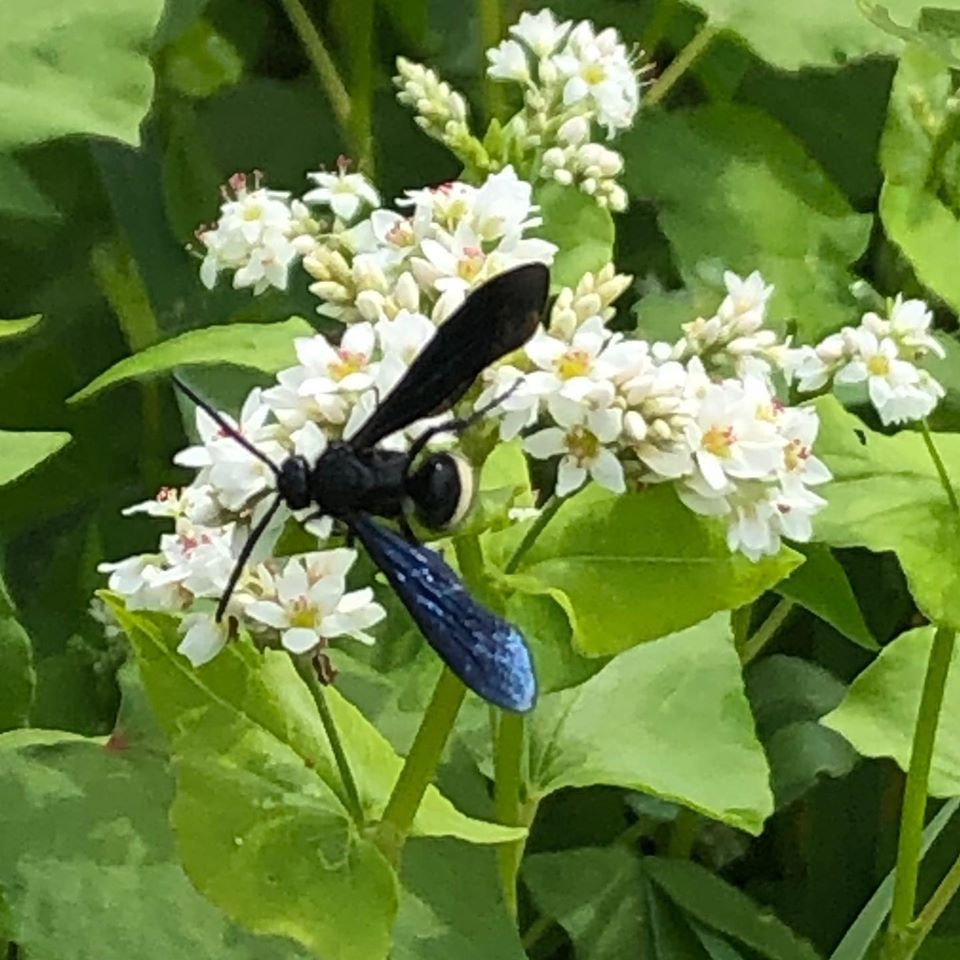
So we’ll tell us about something that did grow well this year what’s growing. I’m also excited to hear about your flowers!
1 (6m 22s):
Yeah. Some of that grew well, well, we’ve been just loving some of the ornamental alliums. We try to do as many perennials as we can on the flower farm.
We really like having these little perennial ecosystems where we have maybe a tall, early perennial, and then we’ll put some annuals into that row and then have maybe a third, low growing late perennial or perennial herbs that we use as filler.
So very excited about some of the alliums the ornamentals with maybe three or four inch purple heads, really like those, and been very excited about seeing Sage really established itself and use as a filler ornamental, aromatic filler, that’s a perennial plant that grows really well here in Missouri.
So those two things are highlights for us.
0 (7m 8s):
I love growing stage!
My sage is blooming right now and it’s so pretty. I love all this toes. Like how did you get started in the flowers? Oh, well, I guess you did kind of house your mom always grew flowers. Like, I dunno, I guess I just want to hear a little more about your flower business, because somebody asked me way back in the meeting.
They’re like, I want to hear more stories about flower farmers.
Yeah. So my wife and I met outside Missouri. I’d left Missouri to go to school and we lived away from Missouri for a long time and I really wanted to get back and I wanted to farm and we’re looking at ways to get back into agriculture and row crop agriculture is really, really neat, but it’s also a huge capital investment to start. And my family doesn’t have the thousands of acres that you need to be profitable in this particular commodity market.
And it’s also, you know, maybe not the type of agriculture is really excited about, and we were, you know, just drawing up different farm plans for, in a winter and going over again and again.
And they always included some flowers because we both always loved growing flowers and our parents have always grown a flower garden.
And the more we ran through the species selection and the marketing mix and thought about what we would be excited about growing that that might actually be profitable.
Flowers took an ever larger piece of that. And now we’re doing almost all flowers with some vegetables that are really just for us.
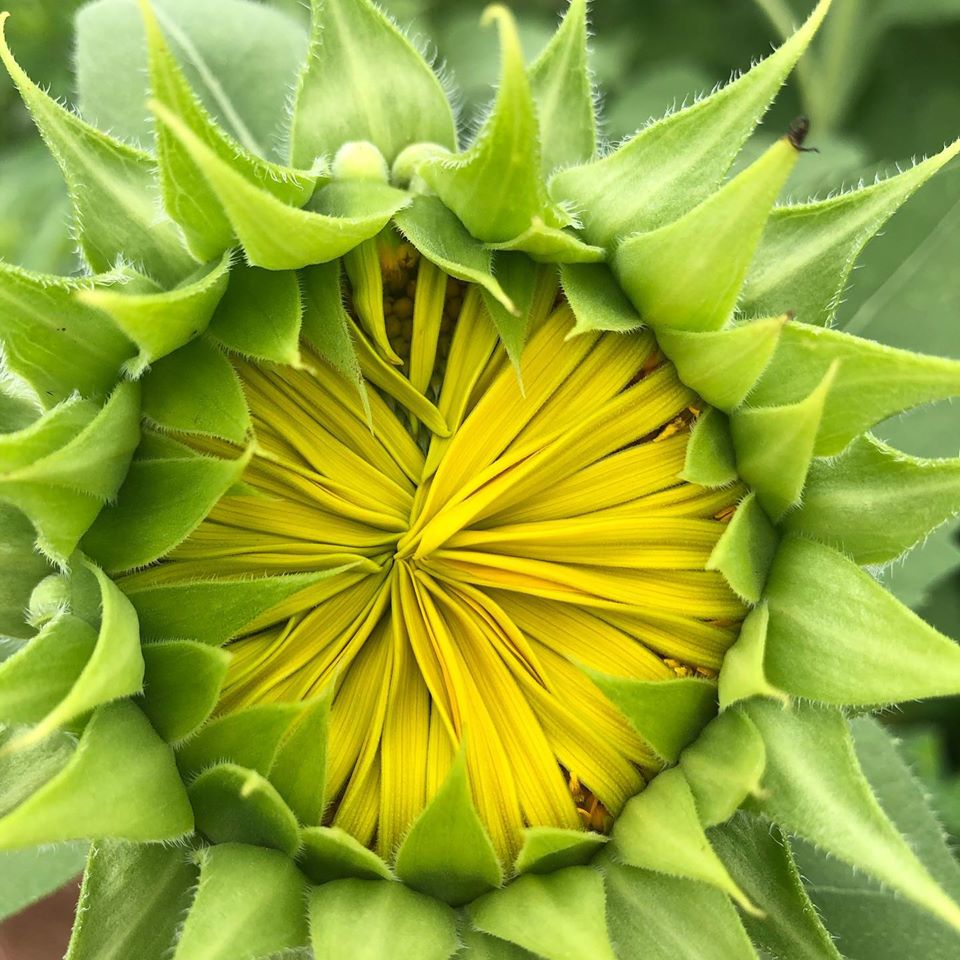
We really enjoy having a mixture of species and all of our beds and
vegetables and flowers do super well together.
Both do much better together than they would individually.
And so we now have settled on, on flowers and we have about a half acre of, and then an apiary. And along with that, we have a composting business where we provide composting supplies and we do make a lot of composts that we use on the farm for our soil, fertility.
What kind of composting supplies?
So we, we sell Bokashi kits and we sell worms and worm towers.
Bokashi, I’m not sure how familiar you are with it. It’s a method of indoor composting that came out of East Asia came from Japan and Korea.
It’s a traditional method of composting, agricultural surplus. Anaerobically so no, no air.
And unlike, unlike hot piles where you, you know, you’re taking a green nitrogen, heavy food waste, and you’re taking a Brown carbon heavy addition, adding water, and then mixing hand turning or turning with, with the machine for, you know, weeks or months until it forms that black crumbly beautiful humus.
Bokashi is anaerobic so there’s no air at all.
It’s done in a closed container and you inoculate the food waste with these effective microbes. Some soil microbes that are really good at tearing through food in a, in an airless environment.
And we just really love it.
We used to make about a thousand pounds of aerobic compost a week, or probably a little bit more with the wood chips added. And we now make about a thousand pounds of Bokashi a week in sealed containers. And it’s just, it’s just super,
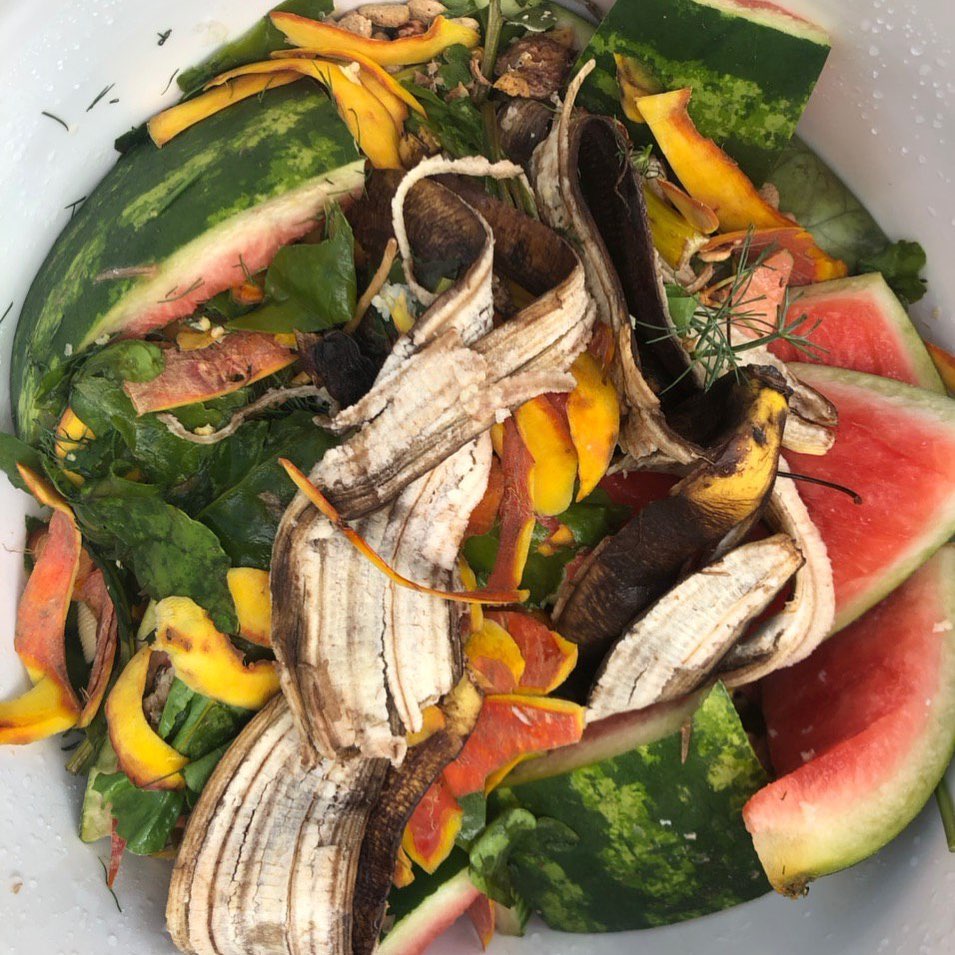
So, but do you like out of like your food scraps or what are you putting in there that you’re giving a thousand pounds a week? Are you getting stuff from other places like the grocery?
We are? Yeah.
So we started really thought about how to get our soil healthy enough to grow beautiful flowers and herbs.
We realized that we would need a pretty good source of, of compost. And so we started a small business that collects residential food waste from houses in the St. Louis area. And then we take the residential food waste and we make compost from that. Or if you did to our worms.
We’ve been doing that for maybe two and a half years now, and this spring we started making and selling like home Bokashi kits because the more Bokashi we, we made, the more we thought this is really a super method of making organic matter available to the soil microbes, but we would just talk to people about it and people were obviously unfamiliar and, and it’s yeah so we do that now.
Well, you know, I love that. So how about, is there something you guys are excited to do different either next year that you’re trying this summer? I mean, we’re like right smack in the middle of July.
Yeah.
The big, big push on our farm is that to get more things in the ground in September.
Our first frost date here is mid to late October so I don’t know where that is for you. It’s probably coming up pretty quick, but we still have some time before frost heads. And our goal is to get as many even Hardy annuals in the ground in the fall, and then put them under a permeable cover, like an Agra bond row cover so they can overwinter in the soil. And then when spring comes, there’ll be established and ready to go.
We’re trying to put a lot more Hardy animals in, in the fall than we did last year.
So that means like right now you’re planting seeds in containers that you’re going to put in the ground. This is so exciting. What kind of what’s hardy annuals? Like lavender?
So like, snapdragons, Larkspur lavender perennial. We’ll put some of that into, but we use soil blocks. So we don’t use plastic seed trays. We make everything in three quarter inch or two inch soil blocks.
So we’ll start, you know, thousands and thousands of these little soil blocks under lights, they’re out, you know, outside under a shade cloth until they’re three or four inches tall and then transplant them, hopefully starting in five or six weeks so they can get established and rooted as the weather starts to cool.
And then all of those snapdragons in larkspur and perennials like echinacea and lavender and arnica and on and on we’ll, we’ll have a chance to, to be like the dominant plant in that bed in the fall. So it, when spring comes, there’ll be already taller and more robust than the weeds that might be in the soil.
So that come April when it’s really thawing and warm, they have a huge jump on competitors. And we don’t have to worry about, you know, either hand weeding a lot of stuff or, you know, trying to prepare that soil surface when it’s cold and rainy and snowing, maybe that there’ll be already growing quite well.
And then when the last frost date hits, we just take off the row cover for the last time.
And then they are already hopefully fairly tall and robust and we get a few weeks or a month early for cuttings.
How did you come up with this plan? Did you guys just make it up yourselves? Are you following like, is this what it Erin does?
Well, no. Yeah. Lisa Zieglar out of Virginia who wrote the book,
Cool Flowers: How to Grow and Enjoy Long-Blooming Hardy Annual Flowers Using Cool Weather Techniques and
Vegetables Love Flowers: Companion Planting for Beauty and Bounty
She’s a huge proponent of this.
And the first person that I’ve heard really talk in detail about how effective it could be.
She’s a big flower girl obviously. And I see her at the flower conferences and I thought, this is absolutely the way to go, right? I mean, it’s everything we love. It’s, it’s it’s reduction of, of weed pressure. It’s, you know, kind of early blooms and it just really worked well.
She makes soil blocks too. So it really works well for our system. And we did last year and we’re gonna do a lot more of this year. Cause it’s, it’s great!
0 (15m 5s):
Awesome. I finally got soil blocks at the, they had this Free the seeds workshop and there was like this tool swap. I couldn’t believe they were there.
And I saw, I traded a book for them. I was so excited, but we didn’t actually try them this year because I don’t know, Mike didn’t do a lot of starts. And I think the ones that he did here, he had in the ground before I brought those home are not in the ground, but like in the plastic next year..
But we’re definitely going to try that next year. I love Lisa Ziegler. She was my episode number two, and then she came back and then we’re supposed to speak after her third book, the one Flowers Love Vegetables.
And we’ve never connected since then, but yeah. Awesome. Well, good for you for putting all of this into practice because like I still go out, like she told me, she’s like, well,
Go out in the spring and take pictures of, of what is coming up naturally in the spring. And then that’s what you want to plant in the fall.
And I still take those pictures, but I haven’t like taken it to heart like you have, this is so amazing. So tell us about something that didn’t work so well, what didn’t go the way you thought it was gonna?
1 (16m 8s):
Well, we, we, we had planned to do a lot of direct seeded sunflowers, so a real deviation from our soil block routine.
And so I had a nice, a nice set of beds and direct seeded, Oh, you know, a pretty good batch of sunflowers.
And I mean, between birds and, you know, field by, we probably had like a 3% survival on those. It was just, it was just so eyeopening. I mean, because we transplant almost everything when they’re really past, past the time that birds want them, I just was not clued in to how much pressure birds can provide on these, on the seeds and seedlings.
And it was, it was just astonishing failure! I mean, you, you have a, a row, you know, 150 foot row that has like four sunflowers. It was really terrible.
Aww, do you think that will happen like every year or was that just this year? Because like all the animals are like in the stages of doing all sorts of weird things with like no airplanes in the air and stuff?
Well, part of it is that we have done a really good job of attracting birds to the garden for insect control.
So there are just a lot of birds around all the time. And so we’ve, we’ve done that to ourselves, but also I went back in a week later, tried again and this time I did what I should have done, which was take up again, Agrabond row cover and, and lay it directly on the seeds on the soil surface and then wet it.
And then when the seeds emerged, you know, a couple of days later, then I put it on wire, a few inches above them and kept them covered from, from prevation until they a few inches taller and pulled the real cover off.
1 (17m 51s):
So I learned I’d absolutely can direct seed, but I have to provide some protection for those, for those seeds. But I do it,
Man. And you are just dropping golden seeds one after the other here, I’m sure listeners are getting all sorts of great ideas and tips. And Lisa Ziegler actually was the one that got me to buy the algorithm.
What I loved about her was she came on and told me exactly what, and somewhere I’ll post in the show notes, like she told me what to get. She was like, Jackie, if you don’t get some, I’m going to send you some.
And we have like, I am so surprised at how long it last did and how well, and then this year I finally put a garbage can down in the garden to keep it like a really clean one to keep it in.
So it’s not getting rained on, but we’re not using it because especially in the beginning of the season, we were like having to cover the things at night and take it off and cover them at night. And yeah, you can use that stuff for everything. And it is so effective.
Well, tell you what else we use it for!
So after it gets, after it gets torn up in the field, that’s how we ship composting worms around the country. We take Agrabond and make, make bags out of it. It’s permeable. Worms can breathe. It lets air little bit of water.
So that’s how we ship all of our composting worms too and you know, custom sewn ever bond bags. So it’s an incredible material!
You actually ship your worms all over the country?
And what kind of work are they like? The red wigglers?
MMMmm
They are! Awesome. I love all this. I’m so glad you found me. Oh my gosh. Well, we’re already at getting to the root of things.
Before We Get To The Root of Things Let’s Thank Our Sponsors and Affiliate Links
Join me on the listen app invite code: GREEN
Now Let’s Get to the Root of Things!
So do you have a least favorite activity that you’re going to kind of force yourself to get out there now?
Yeah, I really don’t enjoy pinching plants.
You know, it’s, it’s a lot of the flowers are go, they do benefit from pinching. They get multiple stems or to get smaller stems like dalia is, if you let a dalia grow, the central stem will be like a two inch thick stock and it’s really hard to put in the base.
So, you know, pinching cutting, cutting it at that growth point is, is pretty key.
I just don’t love doing it. You know, it’s so hard for me to go down and just nip off all of these growing plants. That’s my, that’s actually my least favorite activity.
Floret 2020 Summer Mini Course Preview
Here in the Skagit Valley the farm is growing like crazy and over the weekend I spent some time out in the dahlia patch, pinching them back. This tried and true trick helps branching plants produce double the amount of usable stems, so I thought I'd bring you along since pinching can be a bit nerve wracking. As part of our Cut Flower Garden Summer Mini Course, I'm sharing tips for growing and harvesting some of my favorite flowers, including our most requested video on making fast and beautiful market bouquets. Each of the three free lessons in the Mini Course includes a short video tutorial plus a printable download. To enjoy this free series, sign up here: https://workshop.floretflowers.com/20-summer-mini
Posted by Floret Flower Farm on Monday, June 22, 2020
All right. Well, on the flip side and I can totally relate to that. It’s taken me a long time to embrace that. It was one of the videos that I watched that Aaron benzine cam put in that finally got me like where I was comfortable with it. What’s your favorite activity to do in the garden?
1 (20m 17s):
You know, I love transplanting. I think transplanting it’s, it’s such a great time. I don’t mind waiting at all. It’s fun to see, you know, each time you weed, the plants are a little bit more competitive. So this, those two things are always really, really enjoyable.
0 (20m 35s):
I love transplanting too, because it’s like instinct garden, like all of a sudden you have this bed and it’s full of flowers and then it’s growing. And I think that’s just the best. Whereas like Mike seeds out in the mini farm, I’m like, how do you have the patience to wait for these things to germinate and come up? I’m like Oh my gosh, you have so much patience.
I think he also has a lot of vision too. Like when he, he can see it better than I can or something, I don’t know.
Anyway, what’s the best garden advice you’ve ever received. Matt?
Heavy mulching. Yeah. Heavy, heavy mulching is the answer. Almost everything here. At least here in Missouri, heavy mulching is the answer for getting too hot and dry. You know, it keeps water in. It’s the answer for soil health and provides a long term source of carbon for soil microbes and worms.
You know, keeps, keeps weeds down. I mean, are we heavily mulch every bed every year, all the time. And we just use, you know, thousands of pounds of hay on it and it’s been great for us.
Well, that was what I was going to ask. Where do you get your hay?
From our, from our, our farm. Yeah, we we’ve, the garden is in, we took part of a hayfield for our garden. So after we do the early hay, we reserve, you know, maybe 6,000 pounds of, of bales just right by the garden. And then we use them throughout the year.
Wow. That’s fancy.
How about a favorite tool you like to use if you had to move and can only take one tool with you, what you do not live without?
That’s a tough question. I, I, it’s a tie between soil block maker, which is key, but I, my new favorite hand tool is a dedicated weeder.
It’s a, like a very, very narrow long duel tip travel from Homestead Iron, which is a manufacturer. It’s a blacksmith in the Ozarks Southwest, maybe two hours. And they make just the most incredible steel hand forge tools.
That reason I like it. So it’d be an inch wide and so I can transplant with it. And it’s also the only thing that can get some of the perennial roots out here. It’s incredibly strong.
It’s, it’s one piece of steel from the tip all the way through the handle. So you don’t, I’ve never even come close to bending it much less breaking it. I’ve gone through a lot of travels in, in my gardening past and home set iron I think is just irreplaceable.
So that’s, I would take their, their weeder with me.
Cool. I’ll have to look into those.
And what size soil blocker do you use?
Like we, cause we ended up getting a set of three, so we have like a giant one and medium size. And then the itty bitty teeny tiny ones.
Yeah, probably 98% or the three quarter inch, the teeny tiny ones. I can do 160 individual blocks on a green cafeteria tray. And those are pretty cheap commodity. So I use the three quarter inch for almost everything. If we’re doing tomatoes, you know, or sunflowers larger seeds, I’ll use the two inch.
I no longer use the larger one, which what’s the larger four inch or six inch. I no longer use that at all. When I, when I upsized tomatoes from two inch, what I do now is just make the soil mix super wet and then grab a handful and like pack it around the two inch into a kind of a loose rough ball. And I use that instead of the really large block.
I just find that it doesn’t hold together as well. So it really needs a lot of hand pressure anyway, but that three quarter inch and to enter in pretty heavy rotation.

Interesting. Cool. Do you have a favorite recipe you like to eat or cook from the garden?
Squash Bug Pressure
I do. I do. We, we have a lot of squash bug pressure here. And so we’ve started planting winter, winter squash in the summer. Like I’d say, you know, for us June 1st, when it’s really hot and the soil is like 72 degrees, we’ll do winter squash in the summer. And then as those squash are maybe four or five inches long, like an immature butternut or whatever, we cut those and cut leaves and then we’ll cook the leaves and the immature squash, like you would, you know, zucchini or summer squash, but they’re a lot heartier and a lot more resistant to pesst and they just taste great.
Yeah. So we cook a lot of, of winter immature, winter squash and squash leaves.
Like, or you just sauteing them in olive oil?
Yes
MMMM… How interesting, how, and like that is one of the questions I think was like out of 30 questions, like five different people were like,
what do I do about my squash bugs?
What do I do about squash bugs?
Well, you brush them off. You know,
I had one lady told me one summer, she’s like I have 67 a pound squash for all the time that I have spent picking the Beatles off of these.
I mean the longer, the short answer, what I do is when I see those eggs on the squash plant and the winter squash plant, I’ve already had five weeks of taking leaves and squash them.
And I just basically take a really last aggressive harvest. And then when the plants go on, I put something else there.
But that long, you know, if you have time, yeah, go ahead and brush the eggs off.
Cool. Do you have a favorite of podcasts if you, listen to mine to you listen to some others, you got a good podcast to share.
I listened to yours. I listened to No Till Market Gardener it’s a podcast that took the place of farmer to farmer after Chris stopped producing it. So I listened to that quite a bit too,
with Jesse Frost?
Yeah. With Jesse.
Cool.
How about a favorite internet resource?
So it’s kind of a split betweenJohnny’s Johnny’s Seed Library, where they have, you know, growing information and in different articles and then just seed catalogs, I’d spent a lot of time looking through seed catalogs, trying to plan out, you know, what I’ll put in where and planting maturity dates.
2 (26m 47s):
How about a book then, or is that kind of what you use for a book?
The Bio-Integrated Farm
Well, you know, I was thinking about this. I, I, you know, Lisa Ziegler’sbooks are awesome, but I think a book that was pretty formative was Shawn Jadrnicek, The Bio-Integrated Farm, he’s a he’s down in the Southeast and, and has put a bunch of the kind of permaculture ideas into practice on a commercial farm. So that book, the buyer integrated farm has a lot of examples from his own farm on how we can combine a couple essential tools or resources for like a larger scale operation.
1 (27m 29s):
So for example, water retention pond, where he also, you know, raises ducks, you know, or whatever. And that was helpful. And just expanding our imagination about how we might use the landscape to do dual purpose was we were trying to set up the farm that, so I’ll plug that one.
The Organic No-Till Farming Revolution: High-Production Methods for Small-Scale Farmers
Cool. I’ll have to check that one out. Did you read Andrew Mefferd’s the No Till Farmer? That was really good.
1 (27m 59s):
Yeah. Yeah. And I love seeing that. We’re totally no, till, I mean, we, till when we make the bed, we have to turn the pasture into, into a field bed. So we do that once and then we do power hero the top inch when we, when we flip the bed. But other than that, we’re, we’re totally no till, and I just love seeing what everybody else is doing and get a lot of ideas from Medford and the people in that community.
Sure. Do you have any business advice for listeners about how to sell flowers or get started in the industry?
1 (28m 36s):
I do. I would.
I absolutely do it. I would say do what we did, which was call florist or wholesalers, anybody who’s selling flowers and ask them,
“What would you like to buy locally?”
Because it’s, it’s every micro-market has a gap and our experiences people will just tell you, yes, we cannot get, you know, white sunflowers. We cannot get Dahlia. We cannot get ranunculus. We cannot get lisianthus, whatever it is, and just listen to them and make a list and start planning them.
1 (29m 9s):
And don’t be afraid to try to sell 20 stems. You know, you don’t need to have 10, 10 buckets to be worthwhile. A lot of floors do want 20 or 30 or 15 other a particular locally grown flower to be an accent in a bouquet. I just encourage people that grow really healthy flowers and find out what people around them are looking for and make that match.
Okay. So then like, are you guys actually making a living? Like that’s all you do is sell these flowers or do you have to do other things to supplement it?
So right now we are, we’re probably six months away from doing totally full time farm.
The compost business is a significant part of that, I should note.
So the residential composting is a significant income stream for us. The farm, because we focus so much on perennials next year will be our fourth year of perennial beds. And so that’s when we’re planning to be able to really switch full time to the flowers.
We, you know, like peonies, we have a lot of peonies in the ground and we cut our first peonies this spring. So next year though, be all mature plants for the first time. And that’ll be, you know, so that times the beds will be a big change for us. So we’re getting there.
So where do you get, like, are you playing peony seeds or like peony starts? Like we’re getting like your stuff from it.
Yeah, we, we got, we got peony, you know, roots, the tubers from, we get from a wholesaler and we, you know, peonies were really popular in Missouri in the late 1800s.
And so a lot of the farmsteads around our house have DNAs that, you know, a hundred and some years old now. And I really liked those old time romantic PNS, like the, I like the singles. We tend more towards things like the digest and the more like the 19th century white with a pale yellow center, more than the really thick, full doubles.
And so we get ours from wholesalers and we, you know, we didn’t plant any last year because we’ve got, you know, beds full now of, of three year old peonies.
We are slowly gathering pennies from our neighbors who have like really old Piney bushes that they’ve, that they want to split and fit out. And so we’re trying to transplant those in the garden. That’s sort of a longer term effort to be commercially viable.
So interesting. Cool. Well, do you have anything else you want to tell us before we get to my final question?
Yeah. I want to tell people a little bit more about how Bokashi, works and, and look at it.
This is so fantastic! Like you’ve no idea how fantastic it is. Like you’re using other people’s compost, you’re treating compost, you’re keeping food out of our, you know, we system and just I, and, and helping other people be more organic.
Yeah, it’s fine. So know we have a lot of people that we know who have a, either a tumbler in the backyard or a plastic bin in the backyard, or they have a three bin system they built.
A lot of them have found it pretty challenging to keep a healthy, hot pile that’s free of animals
because you need a lot of food waste and a lot of carbon to get that pile up to temperature. Your hot pile is getting like 130º 140 degrees. And it’s staying there for at least three days to knock back, you know, pathogens and also knocked back weed seeds, like it’ll count tomatoes, tomato seeds as a weed seed.
And most people just don’t have the volume, or I guess the massive food waste to do that.
And so really want people to look at Bokashi, as an alternative, because it takes place in like a four gallon closed bin in the house. And so if it takes you three weeks to fill it, that’s great. It works just as well as for it takes you one week. And it’s really, I think, opening up a great new Avenue for people who don’t have a huge household producing, lots of waste to keep that food out of the landfill and also keep it out of like, you know, backyard nuisances.
So raccoons and foxes and mice it’s I really encouraged people look at Bokashi, , it’s a very straightforward method of like fermenting food waste. It’s technically a fermentation and not a, not a oxidation. So it’s really neat. It’s really simple. And the Bokashi, once it’s finished, it goes right in the garden soil or into the container soil. And it’s, I think just a super way of getting that organic matter available to so all microbes and plants at whatever scale you’re on, you know, if it’s five pounds a month or if it’s, you know, 150 pounds a month, it’s it’s scaled super well.
1 (34m 14s):
And the process is just the same. So I really encourage people, take a look, think if it works for them, think what they can do to keep that extra bit of food out of the waste stream.
2 (34m 28s):
Okay. So two questions, is it like regular? Like we don’t put meat or anything in our compost, like, can you put meat or dairy or any of that kind of stuff in there,
1 (34m 40s):
You inoculate the food waste with a brand that has affected microbes and effective microbes is a term used in the Bokashi, world. That means a mixture of soil organisms, mainly lactobacillus lactobacillus, or bacteria that work anaerobically. And the first thing they do is drop the pH of that container to like a high three. So it’s super acidic. And when they do that, they knocked down all the other microbes in that container. So anything that’s on the meat, you know, anything that’s on the chicken or the, any, anything that’s on your spinach.
1 (35m 16s):
It’s like gone because it’s a super acidic environment. Once that happens, they fade away and other microbes come in, like some yeast come in and they literally ferment that food. All you do is drain off the liquid from a spigot on the bottom of your container, and either dilute it and use it in your garden or report down the drain. And after a couple of weeks of this fermentation, you have food waste that, I mean, it looks like food waste it’s dryer and it’s, but it’s still recognizably food waste, but it has, it smells like a strong rye bread or, you know, still beer it’s, it’s literally just been fermented.
1 (35m 53s):
And once it’s in that stage, it’s not appealing to animals at all. And you bear very pretty shallow. You know, you’ve seen a couple inches of soil on top of it. So, so all microbes can go and tear through the Bokashi, and make it available as nutrients for your plants. But, you know, at that point, Fox raccoons, nothing’s interested in it because it’s already been processed. It’s been fermented by the, by the microbes.
So you can do meat, you can do dairy. We’ve had people tell us that they take some of their like invasive weeds and they chop them up and put them in there with food also, rather than put them on their hot pile, because they don’t want to run the risk of these, of this weed, you know, surviving the, the thermophilic process.
I think time will tell how long we need to Bokashi, , you know, like bind weed, but yeah, you can do almost anything. And it’s, it’s just the same process.
Awesome. Because I find like, one of the reasons I think composting is so great is I don’t want to put that food in my garbage can. Cause then it makes my whole garbage stink and smell and just like such a Lake. I mean, Mike and I probably take the trash once every week to two weeks to the dump, because like, we mostly have recycling and we mow and then everything gets composted.
And so there’s very little in there, but I’ve always wondered about, we don’t eat a lot of meat and then we have dogs. Like there’s not really meat scraps around our house ever, but I wonder what people have to do.
And that is a huge question that people get that I get from a lot of people. What do we do about critters? A lot of people, I feel like don’t want to have a compost pile because they are worried the critters are going to get into it.
For good reason. I mean, if you’re in a suburban or urban area, I don’t think until you get a compost bin, you don’t understand how many animals that are right around you. So the way to find out is have a compost bin and wait until you see the wire bent back or the lid taken off, you know, or teeth marks on it, then you’ll realize just how many animals there are around you.
I just think that’s so weird because we live in the woods. The animals have free reign. I mean, we have a skunk constantly, like it always smell skunk in the morning when you get up. And there’s just, I’m always amazed at how many skunks are on Montana.
We seem to have a problem and they don’t seem to get into the compost. But I know other people worry about that.
My poor mom had a possum get, she had this little Robin’s nest. She was telling you about every day and the other night, she like the dog was barking, like crazy and running around the house and running. And she looks out and there’s the possum right in the tree about, and it was, and I just thought, I was like, wow, I don’t remember ever having possums when we were kids or like that ever being a thing. She said it was so ugly. It’s like a giant rat with a really long tail. And just,
Well, my only complaint, I think possibles are pretty sweet overall, but they have a terrible smell. So if they den up, like under your deck or you just, it’s like a really strong disagreeable odor, that’s, that’s really how you notice you have possums around Cause overall, they don’t cause me any problems, but they do smell really bad.
Huh. Interesting. Yeah. I just didn’t know. And maybe in like the suburbs and urban areas, it’s a bigger problem than it is for us here.
I mean, I remember when my mom was kids, like, that’s how I learned. They had the same kind of compost pile that we have right here when we were kids. I don’t know. What’s changed where she is. I know there’s like 20,000 zillion, more rabbits.
Yeah. A rabbit year! It’s unbelievable. We hear a lot of people say we’d like to try Bokashi, because raccoons have spread our food waste across our backyard. They got in the bed and fried it open and then just ran a muck. And that’s a pretty common story, I think in most suburban areas. So.
Interesting. Okay. And then my other question is like, can you keep this thing in your garage? Would it freeze in the winter? If you?
You keep it under your sink in the kitchen? Yeah. I keep it on the counter. What it’s
That’s that small? I thought you said it was like four gallons.
1 (40m 11s):
Yeah. So it’s like a, yeah, but it’s four gallons. So it’s a little bit shorter than a five gallon,
Which I guess yeah. What’s a five gallon bucket. What am I thinking? I’m picturing like this giant barrell.
No, no, no. Yeah. We we’d make Bokashi, . And in very large barrels, either in 50 gallon drums or 96 gallon.
Yeah that’s what I’m thinking.
No, no, no. For the home use. Yeah. It’s four gallons and it’s, it’s, it’s attractive in Fort worth. You, you can keep it. I would say don’t let it freeze solid, but it can get hot. It can get cold, but most people just have it in their kitchen, in the corner. And then they,
And what is like the kit cost?
The well presence on the website. I hate to go price it. But basically if you include shipping everything, the kids, you know, the, the container itself, which is sealed and then we provide a couple pounds of the bran that actually kicks off the process. Then it has the little tools to help pack your food waste down. And it has little cup to drain the lead shade and our logo on it.
So if you just go to our website B L H Farm.com and check out the shop, it’s all, it’s all available there. I hate, I don’t want to get the price wrong and we’re offering shipping and stuff now too.
Okay, cool. I mean, I was just kind of like, is it like a hundred dollars or $25 or $200?
Like, you know, if you, including shipping, if you get, you know, to just get to see if one that’s working in one, that’s, you know, you’re adding food to including shipping and bringing everything. I think you’re probably $80, you know?
Cool. That’s just what I was thinking right. About $75. So that’s perfect. Hi. Sure. Are we ready for my final question?
I guess I could talk about gardening all day long, but yeah, I think so. Okay,
Matt, if there’s one change you would like to see to create a greener world, what would it be for example, is there a charity or organization your passionate about or project you’d like to see put into action? Like what do you feel is the most crucial issue facing our planet in regards to the environment, either locally, nationally, or on a global scale?
I am very concerned about industrial herbicide use in agriculture. And I, I’m extremely concerned about the new wave of herbicides and insecticides is being used on, you know, 90 million acres of row crop fields. I would like people to really be vocal with their food companies, with
- General Mills
- growers making their cereal and bread,
telling them that they strongly object to the use of things like Dicamba, you know, desiccants like glyphosate in oats and wheat and, and through the food chain, I’m, I’m really disturbed by both the volume of the chemicals being applied and also the toxicity of these.
So as people really take a look at what’s happening in the food supply chain, it’s way beyond Roundup, look at Dicamba, look at the, the volume being used and tell their companies. We would like to see support for, you know, herbicide free grains and, and, and food products.
Awesome. Well, we told him, look, well, let’s tell people your website again,
1 (43m 32s):
Be it B L H Farm.com and we’re on Instagram and Facebook too. We try to keep a pretty current on what’s happening on the farm. So we put blog posts up and have photos, what we’re doing. So check us out and also say, we answer anybody’s questions about composting. It doesn’t matter if you’re a customer or not. We just, you know, it’s really fun to do so anybody who has a problem or a question, or they want to try something new, feel free to drop us a line either through the website, there’s like a contact us, or just email me I’m matt@blhfarm.com.
You know what? We’ve been doing this for a long time and really want people to keep their food waste out of landfill. So we’ll answer anybody’s questions about basically any compost process, if we can,
Do you want to tell people why it’s important to keep their food waste? I mean, I know, and we talk about it a lot, but just like out in the landfill.
Well,
first of all, you’re just robbing us of all that organic matter that could be used to feed the soil,
but you’re also producing a very heavy, wet waste stream that has to be hauled by vehicles that burn gas and then decomposing, you know, producing variety of kind of gross and unpleasant and, and, and problematic substances in the landfill wrapped in plastic while they are.
So, you know, number one thing you can do to get a healthy garden is get organic matter in the soil.
How do you do that? Keep your land landfill free of your food waste.
You know, get it in there and in whatever form Bokashi, or aerobic composts or worm castings, whatever it is, it’s something you can do. It’s absolutely within your control to do it. Whether you’re in an apartment, you’ve got containers on the porch or you’re in a suburban house.
So I mean really want to see people do that and, and see how much we can cut down from our, our landfill and food waste.
That couldn’t have been more perfect. Alright. So if we were going to make a 60 nd pitch for my show for because she composting, what would that be?
60 seconds? Well, I think Bokashi, composting really fills a huge gap in the American composting story. A lot of households who don’t have the ability to do great hot piles can keep their food waste in the soil with the Bokashi, method. And I think that accessibility is a story that really needs to be told, and our website is B L H Farm.com .
0 (46m 12s):
Perfect. Okay. Well, cool. Because I might throw that little promo in between some episodes, like as a sponsor sort of space, just to get people doing that.
1 (46m 23s):
Awesome. That’s so important.
0 (46m 25s):
Thank you so much for booking this call and being here today and sharing just everything you guys are doing and for saving our planet. And, and I hope your flower sales just are awesome. And if you ever want to come back and let us know what’s up since she loves to talk gardening, I’m always looking for guests or just feel free to book another call.
1 (46m 47s):
Thanks, Jackie. I had a lot of fun. Yeah. Next time. We’ll talk flower specific or specific or something like that. Yeah. Perfect.
0 (46m 53s):
Awesome. Thank you. You have a great day. All right, I’m going to shut the recorder off. Awesome.
Get your copy of the Organic Oasis Guidebook and get started building your own earth friendly garden today!
Please support us on Patreon so we can keep the show up on the internet. It cost close to $100 a month just to keep it up on the internet for the website etc so if you could help by supporting it with an $8/month contribution or $10/month to join the Green Future Growers Book Club where we can delve deep into some of the best gardening books that have been recommended on the show! GoDaddy even is bugging me for dollars just to have the domain name…
https://www.patreon.com/OrganicGardenerPodcast

We’d love if you’d join Organic Gardener Podcast Facebook Community!
The Organic Gardener Podcast is a participant in the Amazon Services LLC Associates Program, an affiliate advertising program designed to provide a means for sites to earn advertising fees by advertising and linking to amazon.com
If you like what you heard on the Organic Gardener Podcast we’d love it if you’d give us review and hopefully a 5 star rating on iTunes so other gardeners can find us and listen to. Just click on the link here.
and don’t forget if you need help getting started check out our new
Free Garden Course.com
Free Organic Garden Course

